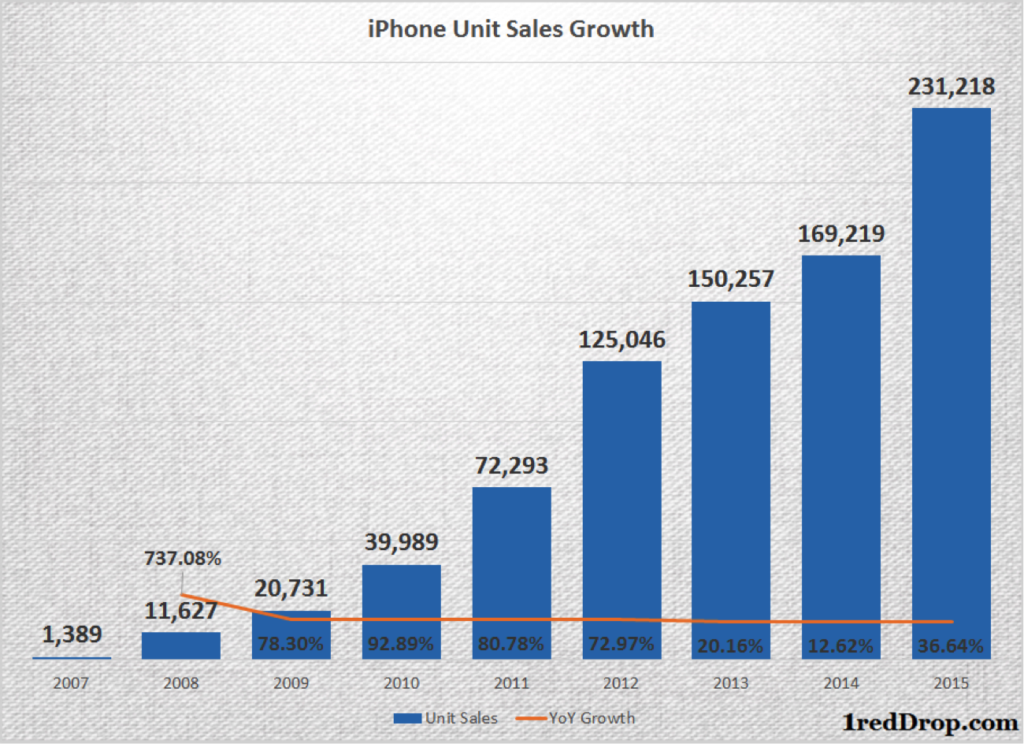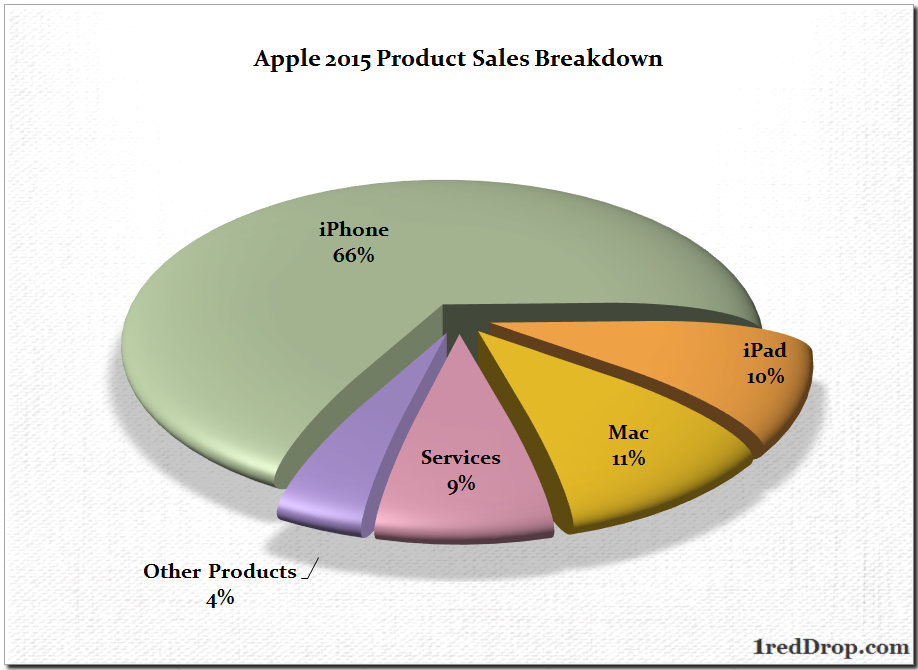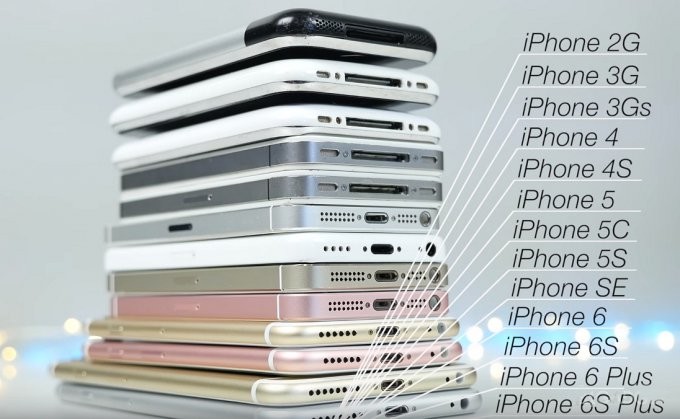Apple’s meteoric rise to become the largest company in the world was a direct result of the company’s success in the smartphone market. Between 2006 and 2015, iPhone sales zoomed from nothing to 231.22 million units worldwide – a staggering achievement when you factor in the high-end luxury segment in which iPhone has been positioned.

Though the proportionate contribution of iPhone sales to Apple’s revenues has dropped slightly in the last five years thanks to the growth in Apple’s services revenue stream and other products such as iPad and Mac, iPhones still account for about 60% of what Apple earns every quarter.

With $151 billion in net sales from this one device family alone, there aren’t many companies that can come close to what iPhone is able to do all over the world. 2016 was the first year in Apple’s – and iPhone’s – history that the most successful product of our time faced a slowdown.
As smartphone sales growth around the world went from speedy to sluggish, Apple wasn’t able to remain immune, and lost nearly 12% of its net sales in the first nine months of this year compared to 2015.
During the nine-month period between October 2015 and June 2016, Apple sold 166.371 million iPhones around the world, compared to the 183.172 million iPhones Apple sold during October 2014 and June 2015, a drop of 9%. It has hurt their revenue numbers significantly, wiping out 12% from their net iPhone revenues to $108.54 billion during this year compared to last year’s $122.83 billion.
The Future of Apple and iPhone
Thanks to the launch of the hugely popular iPhone 7 and iPhone 7 Plus in September, 2016, there are expectations that sales could slowly start growing in the next few years. But there are forces at work that may not allow that to happen.
Related: 10 Years of Apple Mac Sales. Can Apple Inc. Turn Around its Oldest Product Line?
The smartphone market around the world has already entered a mature growth phase from the young high-growth period that it enjoyed in the past. What will make things even more difficult for Apple is that much of its future growth will come from countries that are still developing, and in places where there is plenty of room for internet penetration to grow. That’s not really good news because these are also countries where the luxury premium segment will be much smaller than in developed countries.
The iPhone SE has been seen by many as the ideal solution to the challenge that these new markets pose to Apple’s growth. It’s definitely made some gains, but not as much as the company expected. And with news that there won’t be an iPhone SE next year in order to make room for the iPhone 8’s market, that moonshot might not take off before 2018 or later.
The next few years will clearly show us how Apple is able to handle the next growth phase of its life. Though it will be a nice mix of products along with a strong services portfolio, iPhone sales will still remain the bread and butter product for Apple for a long time to come. The company’s ability to hold its position in developed countries and keep expanding its reach in developing countries will decided the next decade of Apple.
Thanks for reading our work! Please bookmark 1redDrop.com to keep tabs on the hottest, most happening tech and business news from around the world. On Apple News, please favorite the 1redDrop channel to get us in your news feed.



